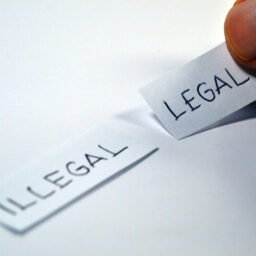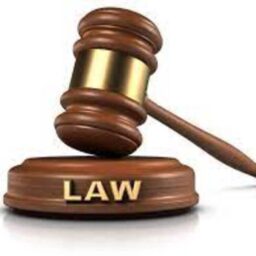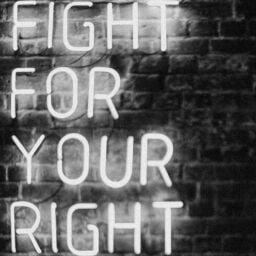CORPORATE VEIL
A corporate veil primarily means a protective layer that provides immunity to the assets of the shareholders of a corporation in case of any adversity that takes place in a corporation. So as a result of the corporate veil, the personal assets of the shareholders such as houses, cars, money in their accounts are safe. After a company is incorporated, the legal position of the company is treated as a separate legal entity which simply means in any tragedy the assets of the shareholders of the corporation cannot be held liable personally. In this case, the courts only look at the company’s assets and the members associated with it are unharmed.
LIFTING OF THE CORPORATE VEIL
As we saw above, the corporate veil acts as a shield to protect the shareholders of the company from being charged under any adversity that takes place in the company. But there are instances where a corporation created is of mala fide intention and because of which the concept of the lifting of the corporate veil comes into play. So, to punish the wrongdoers from misusing the concept of a separate legal entity for unapparent motives the concept of the lifting of corporate veil was introduced. According to which if a corporate entity is wrongfully used and it’s not in accordance with the law then the people associated with the wrongdoings are punished and are made to pay for their misconduct. At any point, the separate corporate entity is disregarded to see behind the self-evident and question the genuine goals of the people in question; it is known as the lifting of the corporate veil. The corporate veil originated from a landmark case called Salomon v. Salomon & Co. Ltd in which the house of lords said that after incorporation Salomon and Co. Ltd became a separate legal entity differentiating it from its members having its own liabilities and rights. Hence the house of lords in this landmark case sought that after incorporation a company becomes a separate legal entity and hence differentiating it from the thinking and behaviour of the shareholders and partners of that particular corporation.
In LIC of India v. Escorts Ltd, Justice O. Chinnapa Reddy emphasized the concept of the lifting of the corporate veil. In the case of the state of UP v. Renusagar Power Company. The Supreme Court lifted the veil. Following the verdict of the Renusager case, In a number of cases, the doctrine has been considered. The instances underneath which the corporate veil may be lifted can be categorized widely into the following two grounds:
- Under Judicial Interpretations.
- Statutory Provisions.
UNDER JUDICIAL INTERPRETATIONS
At the point when it is utilized to avoid Legal Performance of the Contract: In the landmark case of Jones v Lipman [1962] wherein it was seen how Lipman created a sham company in order to avoid the performance of the contract with Jones to sell the particular property. In this particular case, the Supreme Court saw that the company created by Lipman was just to avoid the performance of a contract and thus the Supreme Court said that the respondent’s corporation was made by the defendant as ‘a veil to stay away from acknowledgement by the eye of value’ and on this premise, a prerequisite of explicit execution couldn’t stay away from and thus Lipman was had to perform the agreement with Jones.
At the point when it is utilized to Evade Taxes: In the case of Commissioner of Income Tax v. Sri Meenakshi Mills Madurai, AIR 1967 it was said that the corporate veil of a corporation cannot be used as a shield to evade tax. For the most part, a director isn’t expected to be held liable unless and until he is detained under three categories that are gross neglect, misfeasance and breach of duty. Under the Act, such obligation can be forced even without the impedance of Courts, by the Assessing Officer. Nonetheless, the weight is on the director to demonstrate honesty.
At the point where it is utilized as a Veil to avoid Legal Obligation: In the case of Gilford Motor Co Ltd v Horne [1933] where the company was planning to avoid Horne’s contractual obligations As a result, the court lifted the corporate veil and granted Horne an injunction.
Enemy Character: When two corporations from two different countries get into business but then there is an outbreak of a war between these two respective countries. Now in this case the corporations just like the countries will be treated as enemies. Here, the personality of the organization and the individuals who run the organization is being stirred up so an instance of the lifting of the corporate veil. Daimler Co. Ltd. v. Continental Rubber Tyre Co [1916].
STATUTORY PROVISIONS
At the point where it is utilized for doing Ultra Vires Act: A corporation consists of a memorandum in which there are strict guidelines under which a company has to function. Any act done under the name of the corporation that is unlawful in nature and is not done with respect to the objective clause ends uplifting of the corporate veil and in this situation, the members of the corporation are directly liable.
Fraudulent Conduct: As per Section 339 if the company is closed and the company’s business appears to have been done to deceive the company or other company’s creditors, or if it is proven that the company’s business was done to deceive, the creditors shall be liable.
Inaccurate Illustration of Name: According to Section 12, if the transaction is conducted in some kind of business and the company name is not properly stated, in this scenario the signing director will be liable unless properly paid by the company A similar incident has been seen in the case of Hendon v. Adelman [1973].
Non-compliance with formation requirements of Incorporation: In accordance with Section 464, you may revoke the benefits granted to your company at the time of formation if the provisions of the formation are not complied with.
Determination of the Actual Owner of the Company: In accordance with Section 216, the central government can appoint one or more inspectors to confirm the membership of the company and determine the actual person acting on behalf of the company.
CONCLUSION
The principle that companies have separate legal personalities is also prominent in the Indian Constitution. Article 21 of the Constitution of India stipulates that “no one shall be deprived of life and personal liberty except as provided by law.” According to this article, the company also has the right to life and personal liberty as an individual. Consequently, a company can own and sell real estate, file a lawsuit, or commit a crime. Because the company is formed and controlled by those who act on behalf of the company. As employees or shareholders commit fraud, etc., they are “under the seal of the company”, so the company, which is also a person granted basic rights under Article 21 of the Indian Constitution, must be held liable. By law, a company has an independent legal personality, but as a corporation, the individuals incorporated into the company, i.e. shareholders, are behind the screen of the company. So, when a company’s identity is made public or disclosed, in most cases the shareholder or director finds himself behind a curtain.
Author(s) Name: Shashwat Sinha (KIIT University, Bhubaneshwar)
















